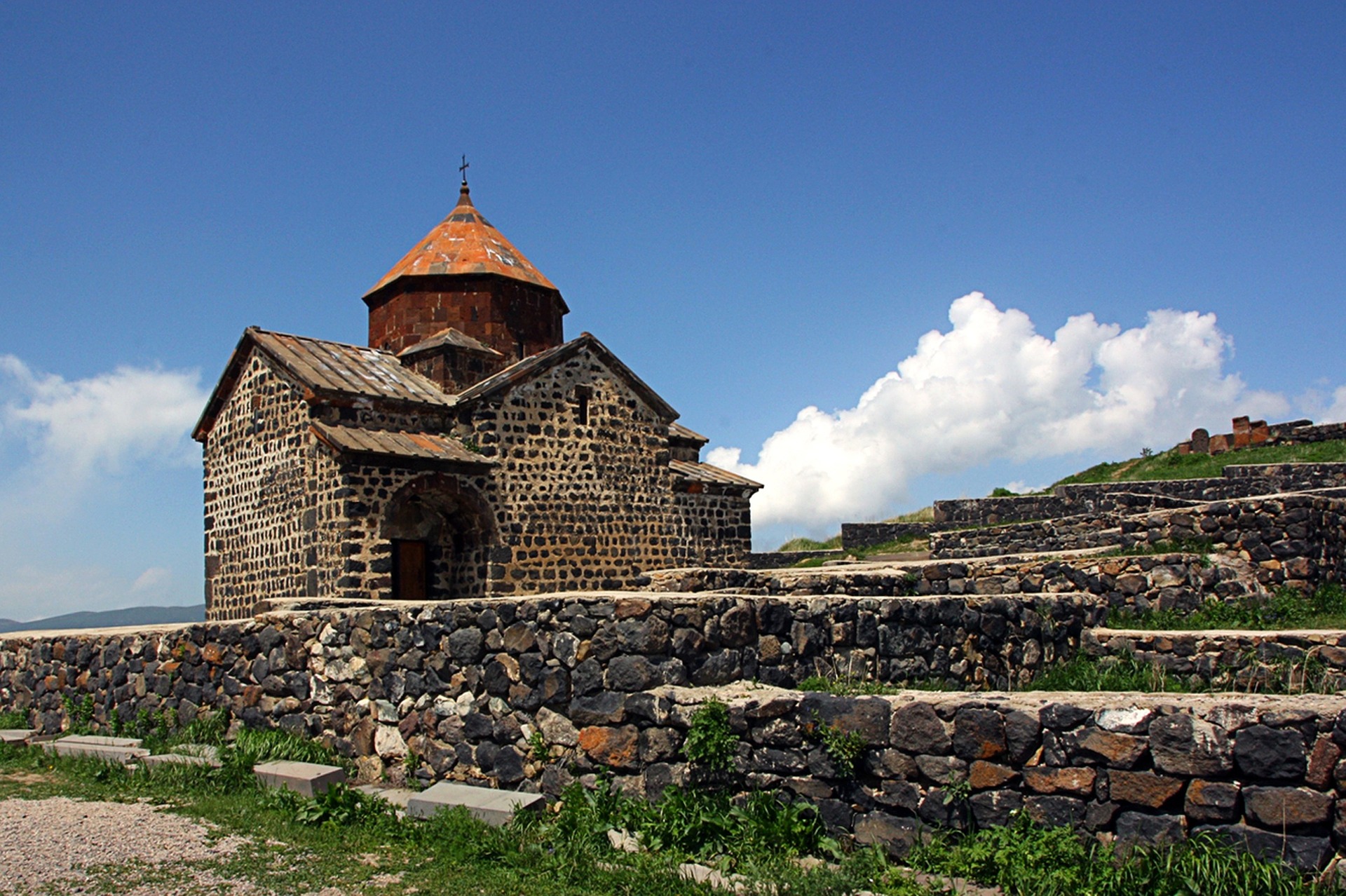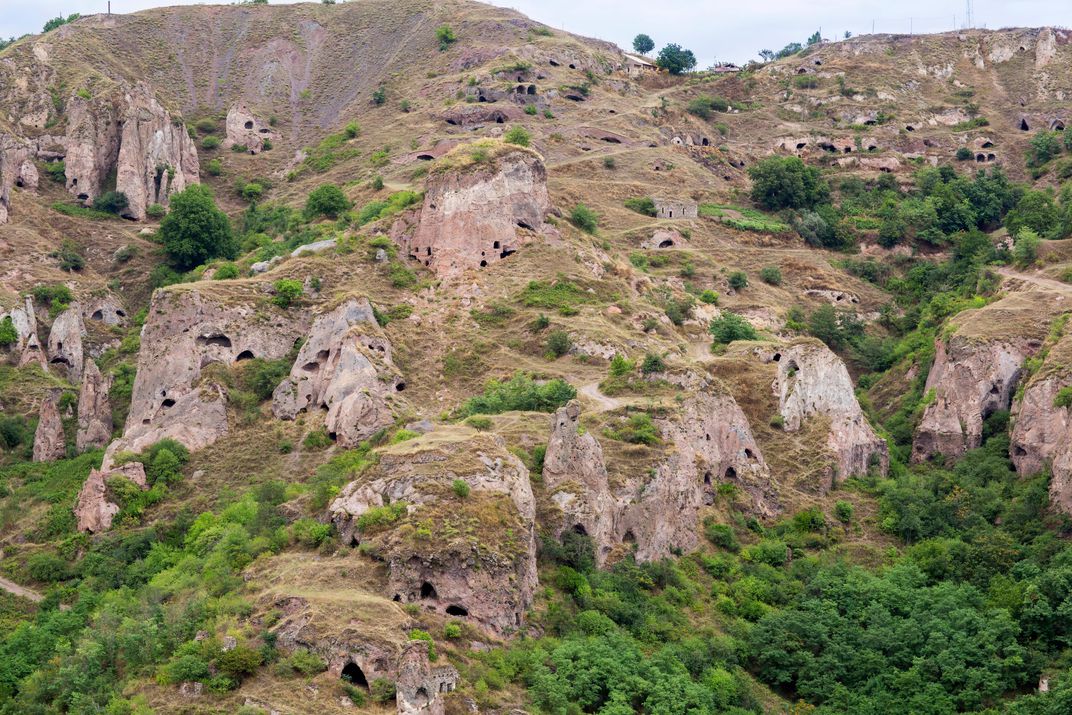Smithsonian Magazine
Explore Armenia’s Medieval Monasteries in Interactive 360-Degree Panoramas
Navigate through secluded buildings that once housed some of the brightest scholars of the Middle Ages
I’m sitting in my living room, peering down through a virtual reality headset into a dirt pit in Khor Virap where legend says St. Gregory the Illuminator was held for 15 years before curing his captor, King Trdat, of an ailment and convincing him to convert to Christianity. Fable or not, by the early 300s AD Trdat had declared Christianity the official state religion, making Armenia one of the first, if not the first, countries to institute a national Christian church.
Armenia’s claim to be the first Christian nation is contested by some—particularly the nation of Ethiopia, which also purports to be the first. The early history of Christianity is murky, but overall, many scholars today agree that Armenia holds this designation.
“Though there were Christians in Ethiopia—a few at least, very early—the same was true everywhere,” Dr. Dickran Kouymjian, Berberian Chair of Armenian Studies, Emeritus, at Fresno State, told Smithsonian.com. “The Armenian Church claims an official conversion of the nation to Christianity in [the year] 301, though many scholars speak of 313 to 314.” Kouymjian says the actual date differs among Armenian historical sources, but researchers prefer to use a date of 314, because it comes after the Edict of Milan, which allowed the open practice of any religion throughout the Roman Empire. Even so, he said, this is still “some decades before Ethiopia, where we learned that a majority of the inhabitants converted after 340.”
Historians believe Trdat’s decision may have been motivated both by a desire to consolidate power over the growing community of Christians within Armenia and as a political move to demonstrate to Rome, who at the time offered protectorate support, a parting of ways with Rome’s region rival, the pagan Sasanian regime.
Regardless of the reasoning, with Trdat’s support, St. Gregory became the first Catholicos of the Armenian Apostolic Church and went about the region spreading the faith and constructing churches on top of pagan temples.
Today, the Armenian landscape is dotted with spectacular churches, the most notable of which date back to the medieval period when the development of communal monasteries transformed these remote locations into centers of art and learning. Today, many of these historic monasteries are still off the beaten path, perched overlooking vast gorges or hidden away in forested valleys.
This is part of what the 360GreatArmenia VR app and website is trying to solve for by making virtual tours available from anywhere. In addition to the Khor Virap Monastery, the project has captured more that 300 virtual reality tours of ancient sites within modern Armenia.
The project’s founder, Vahagn Mosinyan, said seeing a 360-degree image of another town online back in 2012 “triggered…an interest to make the same 360-degree platform for Armenia, because it is a great tool to preserve and to archive cultural heritage.” The resulting stitched images, taken both by drones and photographers on the ground, allow viewers to switch from aerial to street views, navigate through interiors and view relics and historical art. Users are invited to annotate the destinations with information and stories. Backed by Ucom, an Armenian internet service provider, the project was also recently featured in a special exhibit at the National Gallery of Armenia in Yerevan that focused on the more than 50 cultural monuments the project has captured in historical Western Armenia, in modern day Turkey.
The monasteries below can be explored through interactive 360-degree panoramas or navigated virtually using the project’s smartphone app (iOS, Android) and a VR headset.
Geghard Monastery, Goght
This rock-hewn collection of churches and tombs are cut right into the surrounding rock, earning its past name Ayrivank, or Monastery in the Cave (not to be confused with another location of the same name in Kiev, Ukraine today). Over the centuries since its construction, it became famous for the various relics housed in the complex. The most famous of these gave the monastery its current name: Geghard is said to have housed the spear that wounded Jesus’ side during his crucifixion for about 500 years, and Geghardavank means “Monastery of the Spear.”
Haghartsin Monastery, Dilijan
Hidden among lush green trees, Haghartsin is a beautiful example of Armenia’s medieval architecture. The complex features four churches, a dining hall, a gavit and a refectory and is the starting point for several hiking trails. It was built between the 10th and 13th centuries by the order of two princes from the Bagratuni kingdom. Their family seal can be seen on the back of one of the three churches, and intricately carved stone carvings, including one of the Madonna and child stand near the door of another.
Haghpat Monastery, Haghpat
The 10th-century monastery was built halfway up a hillside overlooking the Debed River. The complex includes eight buildings encircled by a fortified wall. The oldest building, St. Nishan church, was completed in 976 during the reign of King Ashot III. The church appears from the outside to be rectangular but forms a cruciform shape in the interior. On the exterior wall, a full-scale relief statue depicts two 10th-century kings holding a small model of the St. Nishan. Inside, part of a 13th-century fresco can still be seen.
From the 10th to 13th centuries, Haghpat was considered an important learning center, and today, visitors can still see the library, a domed building with a vaulted ceiling and skylights.
Kecharis Monastery, Tsaghkadzor
In its heyday, Kecharis was plated in silver and gold, a stunning display of wealth worthy of one of the great learning centers of the 11th to 13th centuries. The best Armenian academics are known to have traveled to teach at the school here. The first church on record at this site was built in 11th century, but ruins of a 5th-century basilica can be found here, as well—though scholars are not sure about its history, nor that of the earlier structures that also occupy the grounds.
Noravank Monastery, Areni
Noravank was built in the 13th century as a home for bishops as well as a prince’s tomb. Today, three churches sit inside a narrow gorge in the Amaghou valley, surrounded by red and gray rock cliffs. Momik, the architect of one of the churches and a sculptor who carved an intricate khachkar—an Armenian cross-stone—at the site, is also buried there. Noravank is most well known for a two-story church with a rock-hewn staircase on the outside wall of the building.
Saghmosavank Monastery, Saghmosavan
According to legend, a priest at Saghmosavank offered to cure a violent ruler and invader of his deadly illness, provided that he release as many captured Armenians as would fit inside the church. Seventy thousand prisoners packed into the monastery—and at this point, lore says, the priest turned them into doves and released them through a church window to fly back to their homes where they would return to human form. Beyond the legend, Saghmosavank is famous for its manuscripts and was considered an important center for calligraphy.
Sanahin Monastery, Alaverdi
Like Haghpat, Sanahin (which is less than 30 minutes from Haghpat) was an important learning center in Armenia. This monastary was renowned for its calligraphy and illumination school and is a notable example of Armenian religious architecture that combined Byzantine styles with traditional designs from the Caucasian region. Sanahin is a bit older than Haghpat, and that may have played a role when it was named “sanahin,” meaning “it’s older than the other one.”
Sevanavank Monastery, Sevan
Think of Sevanavank as a holy reform school; monks from Ejmiatsin were sent here after committing a sin. As a result, Sevanavank had the strictest lifestyle and conduct guidelines of any monastery in Medieval Armenia. At the time when the monastery was built, the peninsula on which it is located was an island. Later, when Armenia was under soviet rule, water was drained from the nearby lake Sevan, dropping the water level roughly 20 meters and creating a land bridge.
Tatev Monastery, Tatev
Construction of the current complex began in the 9th century on a large basalt plateau overlooking the Voratan gorge, the largest gorge in Armenia. Starting in the 14th century, it became known as a university, making it one of the oldest in the world, where students could study science, religion, philosopy and the arts. Modern day Tatev holds a Guinness Book record for having the longest non-stop, reversible, aerial tramway in the world, called the “Wings of Tatev,” that transports visitors from the monastery to Halidzor village.
Akhtala Monastery, Akhtala
This is one of the few Orthodox monasteries in the country. Researchers have dated the main church to between the 11th and 13th centuries, with murals inside dating to 1205. At one time, the monastery held the cross that some believe John the Baptist used to baptize Jesus. Frescoes and murals cover the walls and domed ceiling inside, depicting scenes from the old and new testament, including the Last Supper.
Harichavank, Harich village
Harichavank is a seventh-century monastery, but excavations at the site have found evidence of use as far back as the second century BCE. It was famous in its heyday for its school and scriptorium, housing an impressive selection of Armenian manuscripts and art—including one copied page of the Bible from 1209, reportedly done by Margare, a famous painter of the time.
At one time, after 1850, the Catholicos of Echmiadzin used Harichavank as a summer residence. Many of the monastery’s ancillary buildings were added upon his arrival.
Source: https://www.smithsonianmag.com/travel/explore-armenias-ancient-monasteries-interactive-360-degree-panoramas-180963579/









